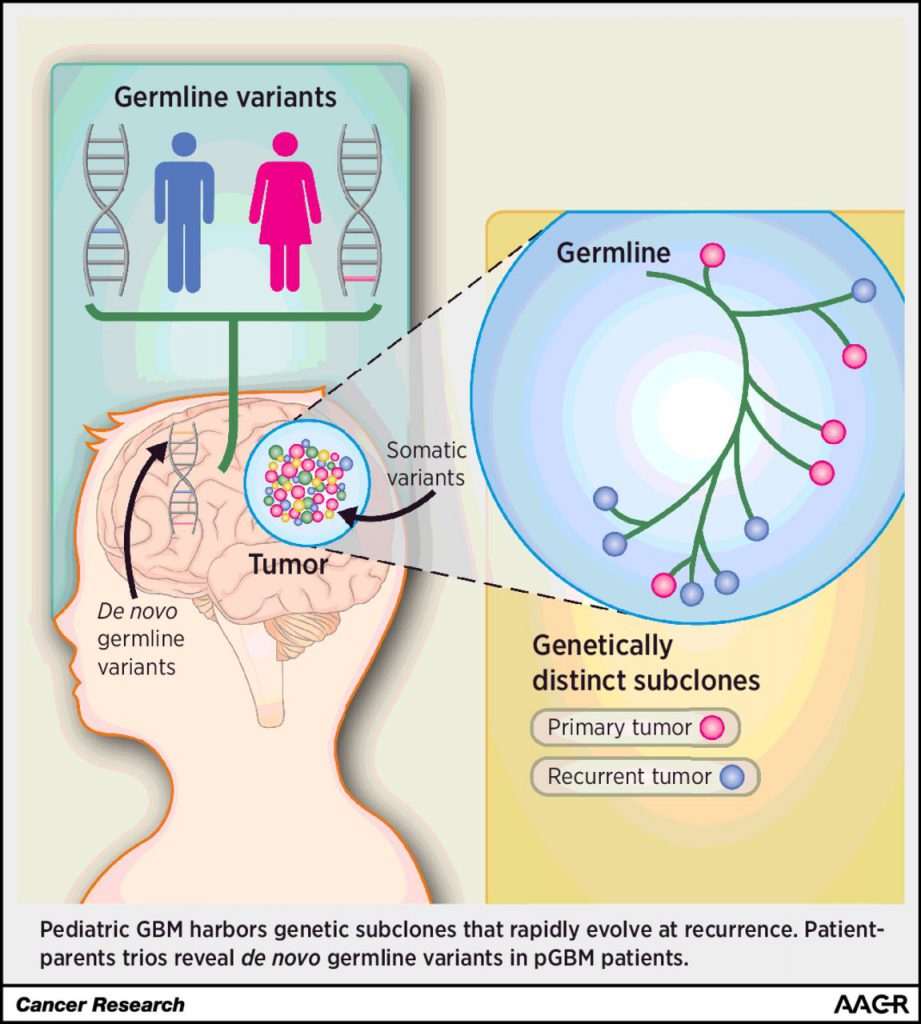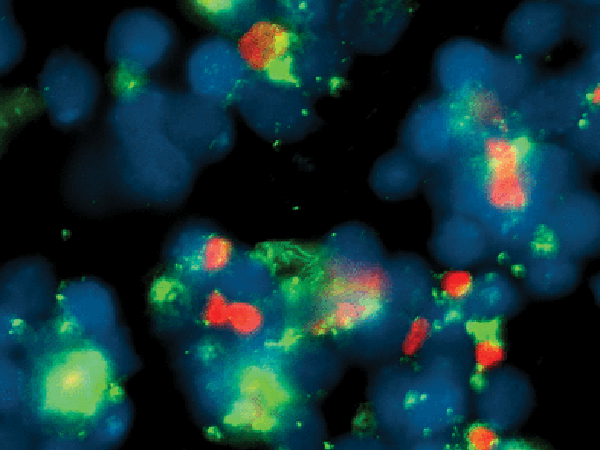From the Journals: Editors’ Picks for May
Every month, the editors from the eight AACR journals select one “must read” article from each issue, which we highlight on this blog. For May, research articles span from an investigation of enzalutamide resistance in prostate cancer to an examination of how distance to care affects treatment initiation and completion among patients with cervical cancer living in urban and rural areas. As usual, all articles summarized here are freely available for a limited time.
Journal: Clinical Cancer Research (May 15 issue)
While targeting the PD-1/PD-L1 axis has proven efficacious against non-small cell lung cancer (NSCLC), some patients develop resistance to this treatment; identification of resistance mechanisms is an area of active investigation. In this study, the authors found that an allelic variant of killer-cell immunoglobulin-like receptor (KIR) known as KIR3DS1, which is expressed on natural killer (NK) cells, was associated with resistance to PD-1 blockade among patients with NSCLC. The presence of this variant was significantly associated with decreased progression-free survival only among patients with NSCLC who were treated with immunotherapy and not among those treated with chemotherapy. These results suggest that KIRs may predict responses to PD-1-targeted therapies but require further validation.
Journal: Cancer Research (May 15 issue)
Activation of MAPK Signaling by CXCR7 Leads to Enzalutamide Resistance in Prostate Cancer
Enzalutamide is a treatment for castration-resistant prostate cancer, but patients can develop resistance to this second-generation androgen receptor antagonist. In this study, the authors found that in enzalutamide-resistant prostate cancer cells, the chemokine receptor CXCR7 was highly upregulated and promoted cell survival and invasion. Upregulated CXCR7 resulted in MAPK pathway activation in enzalutamide-resistant prostate cancer cells, and comparison of samples taken from patients with localized prostate cancer and castration-resistant disease revealed that levels of CXCR7 and phosphorylated ERK increased upon disease progression, especially following treatment with enzalutamide. Additionally, the MEK inhibitor trametinib attenuated enzalutamide-resistant prostate cancer growth in both in vitro and in vivo models. These results identify CXCR7 as a potential biomarker of enzalutamide resistance in patients with castration-resistant prostate cancer and suggest that inhibition of the MAPK pathway may serve as a potential therapeutic strategy for this disease.
Journal: Cancer Prevention Research
Calcium Intake and Risk of Colorectal Cancer According to Tumor-infiltrating T Cells
The intake of calcium, a key second messenger that enhances T-cell proliferation, has been associated with a decreased risk of colorectal cancer. Here, the researchers examined the association between calcium intake and colorectal cancer risk in relation to tumor T-cell infiltration status by evaluating the densities of tumor-infiltrating T-cell subsets (i.e., CD3+ cells, CD8+ cells, CD45RO+ cells, and FOXP3+ cells) from 736 colorectal cancer cases. They found that higher calcium intake was associated with lower colorectal cancer risk primarily when tumors had low T-cell infiltration; however, the difference in risk as stratified by low or high T-cell infiltration was not statistically significant for any T-cell subtype examined. Associations were not affected by sex, source of calcium intake, tumor location, or tumor microsatellite instability status. These results suggest that calcium intake may modulate T-cell function, which could be exploited in colorectal cancer immunoprevention.
Journal: Clinical Cancer Research (May 1 issue)
Epigenetic Silencing of miRNA-338-5p and miRNA-421 Drives SPINK1-positive Prostate Cancer
Overexpression of the protein serine protease inhibitor Kazal type-1 (SPINK1) is associated with aggressive prostate cancer, and its mechanism of its regulation remains under investigation. In this study, the researchers found that two micro RNAs (miRNAs), miRNA-338-5p and miRNA-421, could modulate the expression of SPINK1 in multiple cancer cell lines. Additionally, ectopic expression of these miRNAs attenuated SPINK1-mediated oncogenesis in both in vitro and in vivo models. Analysis of human prostate cancer tissues revealed a significant association between the expression of SPINK1 and the epigenetic regulator EZH2, indicating that these miRNAs may be epigenetically silenced in SPINK1-positive prostate cancer. The authors suggest that the restoration of miRNA expression through epigenetic inhibitors or synthetic mimics may provide a new strategy to combat SPINK1-mediated oncogenesis.
Journal: Cancer Epidemiology, Biomarkers & Prevention
Cervical cancer incidence and mortality have decreased substantially in recent decades, yet vulnerable populations, including those belonging to minority groups, those with low socioeconomic status, and those residing in rural areas bear a disproportional burden of cervical cancer in the United States. Here, the authors evaluated how distance to care affected initiation and completion of treatment among insured cervical cancer patients living in urban or rural areas. Among urban patients, those who lived further than 15 miles from the nearest treatment facility were less likely to initiate treatment within six weeks compared to those who lived less than five miles away. However, the distance to the nearest treatment facility was not associated with timely initiation of treatment for rural patients. While distance to care did not statistically affect completion of treatment among women with cervical cancer residing in urban areas, women in rural areas with cervical cancer were more likely to complete treatment if they lived five miles or further from the nearest facility. These results suggest that distance to care affects treatment initiation among cervical cancer patients in urban areas and other factors may play a role in affecting treatment completion among patients in rural areas.
Journal: Cancer Research (May 1 issue)
Intratumoral Genetic and Functional Heterogeneity in Pediatric Glioblastoma
Pediatric glioblastoma, while rare, is a lethal brain tumor with no effective standard of care treatment. To elucidate mechanisms of tumor evolution, the authors utilized whole-genome sequencing to compare primary tumors with corresponding recurrent tumors and found that less than 8 percent of nonsynonymous single-nucleotide variants were shared between the matched pairs. The authors also compared the genomes of two pediatric patients with the genomes of their parents and found that genetic variants could be somatic, inherited from a healthy parent, or could arise de novo in the germlines of the pediatric patients. Additional analyses supported a model of slow-cycling cancer stem cells which drive the formation of rapidly proliferating progenitor-like cells. These results suggest that effective therapies for pediatric glioblastoma must account for its proliferative hierarchy and genomic heterogeneity.

Journal: Molecular Cancer Research
Multiple Defects Sensitize p53-deficient Head and Neck Cancer Cells to the WEE1 Kinase Inhibition
Inhibition of the cell-cycle kinase WEE1 has shown promising preclinical and clinical activity in p53-mutant head and neck squamous cell carcinoma (HNSCC). In this study, the authors investigated how p53 status influences the response to AZD1775, a WEE1 kinase inhibitor, at the molecular level by evaluating its effect on HNSCC cells. They found that p53 deficiency exacerbates replication stress and permitted entry into mitosis despite the persistence of unresolved genomic lesions induced by AZD1775, as measured by the DNA damage marker γH2AX. As a result, DNA damage was carried over across multiple rounds of DNA replication, intensifying with each consecutive cell cycle. The authors posit that these results will help to optimize the therapeutic window for the treatment of p53-mutant HNSCC with WEE1 kinase inhibition.
Journal: Molecular Cancer Therapeutics
Prospective Clinical Sequencing of Adult Glioma
Treatment options for gliomas, which have a poor prognosis, have not improved in the past 20 years. In this study, the authors utilized ultradeep targeted sequencing to analyze 237 tumors taken from patients with glioblastoma and lower-grade glioma. Of the 2,485 somatic mutations identified, more than 60 percent were attributed to 12 hypermutators, and the most frequently mutated genes included TP53, IDH1, and EGFR. Multivariate analyses indicated that patients harboring wildtype IDH had a significantly worse overall survival compared with those with mutated IDH, suggesting that the mutational status of this gene could offer prognostic significance in this patient population. Three of 14 patients who consented to targeted therapy based on their sequencing data responded to treatment. These results suggest that ultradeep targeted sequencing could be a useful tool in the clinical setting for this hard-to-treat cancer.
Journal: Cancer Immunology Research
Sialic acid-binding immunoglobulin-type lectins, or Siglecs, play a role in immunoregulation, and their role in cancer remains an area of active investigation. In this study, the authors found that the majority of tumor-infiltrating CD8+ T cells taken from melanoma patients had high expression of Siglec-9. Additionally, circulating CD8+ T cells expressing Siglec-9 taken from both melanoma patients and healthy donors were of an effector memory phenotype. The binding of Siglec-9-specific antibodies or ligands functionally inhibited this T-cell subset, indicating that Siglec-9 checks T-cell function. Both primary and metastatic melanoma lesions expressed cognate Siglec-9 ligands on the majority of tumor cells. These results suggest that targeting the Siglec-9 axis may provide a new strategy to activate T cells in the tumor microenvironment.
Journal: Cancer Discovery
Even though small cell lung cancer (SCLC) tumors typically harbor a high mutational burden, treatment with checkpoint inhibitors is efficacious in only a small percent of patients. In this study, the authors found that the inhibition of DNA damage response (DDR) proteins PARP or checkpoint kinase 1 (CHK1) enhanced the expression of PD-L1, increased the levels of tumor-infiltrating lymphocytes, and synergized with PD-L1 blockade in multiple SCLC models. Additionally, DDR inhibition resulted in activation of the innate immune STING pathway as indicated by increased expression of key chemokines, which facilitated cytotoxic T-cell recruitment and antitumor immunity. Because both PARP and CHK1 inhibitors are currently being evaluated in clinical trials for SCLC, the authors suggest that these results could be rapidly translated into the clinic.



